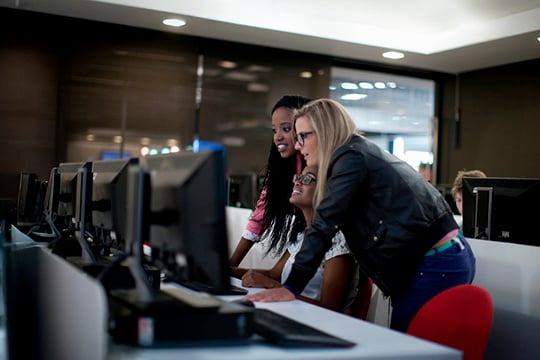6 tips on choosing a coding course for your child
The 21st century saw one particular branch of education, STEM, grow into an indispensable element of society. The English acronym stands for "Science, Technology, Engineering, Mathematics". It's easy to see how much practical use STEM has today: digital and information technologies, as well as automation, are spreading like wildfire, and developing and operating these technologies requires a massive pool of educated professionals. What's perhaps less obvious is that STEM education is also an excellent tool for improving cognitive skills and logic. STEM topics, especially digital literacy and coding skills, not only give children a huge advantage in higher education and a future technology-oriented career, but also develop critical thinking, problem-solving skills, memory, language skills and creativity. Additionally, such knowledge taught with proper methodology will also instill children with a love of learning.
Therefore, it's not surprising that more and more businesses offer coding courses for children. As a parent, you might find yourself hard-pressed to choose the right educator, as not all of these companies will give your child the promised knowledge, and not all will impart useful long-term skills. Here are 6 key questions to help you pick the right educator for your child:

1. Where does the curriculum come from?
Was it compiled by the school with the help of international experts, and is it under constant development? Or is the school just "selling" some free material they've downloaded from the internet? A school which has its own curriculum, specifically created for children and perhaps rated by some independent quality standards institution, will serve your child's needs much better.
2. Does the curriculum and its teaching methodology take the students' needs, age and knowledge level into consideration?
Not everyone's the same – children learn in different ways and at different speeds depending on their age and previous knowledge level. These individual differences are important to consider in assembling course groups, in writing the curriculum, in creating the educational platform and in holding the actual classes. You should take your child to a school which considers children's individual qualities at every level.
3. Are classes fun and interesting?
Sitting in front of a screen for hours and performing monotonous work is soul-killing drudgery even for adults, and it's much worse for children! It's not enough to deliver the material with a monologue or an on-screen presentation; it's also important to pass on that knowledge playfully, as children need motivation. A properly developed curriculum will consider the children's need for success and positive reinforcement, and gives them a long-term motivation to keep studying. A child who goes to class with a smile on their face and can't wait to study again will also make the parent much happier.
4. Is there real teaching in class?
There are places, often called "digital playhouses," where children might be having fun, but they don't actually learn anything. Copying the material from the screen but not being able to try it out in practice is not genuine education. Having no way to ask somebody for help if you can't do a task on your own won't teach you mush, either. Another common problem which leads to no learning is "educational software" which automatically gives the right answer to a question or performs a task instead of letting the student do it on their own. A course like that might give your child an ornate certificate at the end, but they barely have learned anything. You shouldn't spend money on "education" like that.
5. Does the educational platform conform to children's needs?
Some educational platforms are open, allowing children to freely browse the internet during class, or otherwise have their attention wander. It's no wonder they cannot focus. A closed platform makes it easier for students to concentrate. Another common problem is when an educational platform was designed for adult use, but is used to teach children. An unsuited platform can greatly harm the learning experience, making the transfer of knowledge less efficient and enjoyable. Seize any chances to attend a free demo class at an open day, so you can see if the educational platform and the teaching methodology are right for your child.
6. And finally, one of the most important questions: who are the teachers?
A good school needs teachers who not only understand the constantly evolving field of digital literacy and coding, but who can also teach it in a way that's compatible with children's modes of learning. They should be youthful educators, whom the students can look up to, but with whom they can also develop a close, trusting relationship. Children can bond with their teachers very strongly; this is an important connection in their lives, and will determine their long-term attitude to learning. Always check out the educators of any school you might consider.
We hope these questions will help you choose the ideal coding and digital literacy course for your child. We advise you take a close look at the educational options available to you: read their websites carefully, look for recommendations and reviews, and speak to children and parents who have first-hand experience with one candidate or another.
We at Logiscool work with young, certified educators who teach via a closed, safe, continuously improved platform developed with children's needs in mind. The playful curriculum they teach was designed specifically for children's needs, considers the students' age and knowledge level, and it provides constant motivation and a sense of success. Accompany your child to one of our free open days and try the unique and efficient Logiscool learning experience together!
More information: https://www.logiscool.com/us.


